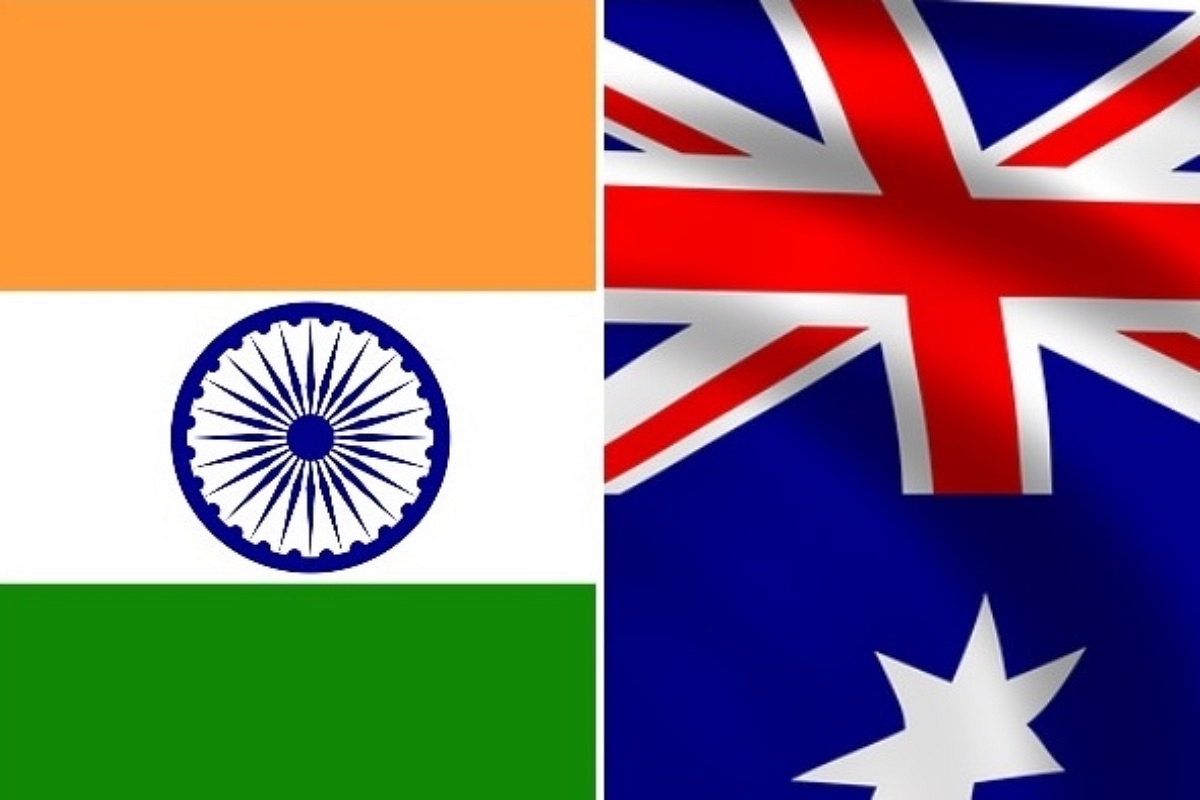Economy
'IndAus ECTA': Here's Everything You Need To Know About India-Australia Interim Free Trade Deal

Flags of India and Australia (ANI)
Union Commerce Minister Piyush Goyal and Australian Trade Minister Dan Tehan on Saturday (2 April) signed the much-awaited India-Australia Economic Cooperation and Trade Agreement (IndAus ECTA) in a virtual ceremony in presence of Prime Minister Narendra Modi and Australian PM Scott Morrison.
The India-Australia ECTA is the first trade agreement that India has signed with a developed country after over a decade, the Commerce Ministry said on Saturday (2 April)
According to the Commerce Ministry, the salient features of India-Australia ECTA, negotiations for which were formally re-launched on 30 September 2021 and concluded on a fast-track basis by the end of March 2022, include:
1. The agreement encompasses cooperation across the entire gamut of bilateral economic and commercial relations between the two friendly countries, and covers areas like Trade in Goods, Rules of Origin, Trade in Services, Technical Barriers to Trade (TBT), Sanitary and Phytosanitary (SPS) measures, Dispute Settlement, Movement of Natural Persons, Telecom, Customs Procedures, Pharmaceutical products, and Cooperation in other Areas.
2. Eight subject specific side letters covering various aspects of bilateral economic cooperation were also concluded as part of the Agreement.
Impact or benefits of the trade deal for India and Australia:
3. ECTA provides for an institutional mechanism to encourage and improve trade between the two countries. The ECTA between India and Australia covers almost all the tariff lines dealt in by India and Australia respectively.
India will benefit from preferential market access provided by Australia on 100 per cent of its tariff lines. This includes all the labour-intensive sectors of export interest to India such as Gems and Jewellery, Textiles, leather, footwear, furniture, food, and agricultural products, engineering products, medical devices, and Automobiles.
On the other hand, India will be offering preferential access to Australia on over 70 per cent of its tariff lines, including lines of export interest to Australia which are primarily raw materials and intermediaries such as coal, mineral ores and wines etc.
4. Further, as regards trade in services, Australia has offered wide ranging commitments in around 135 sub sectors and Most Favoured Nation (MFN) in 120 sub sectors which cover key areas of India’s interest like IT, ITES, Business services, Health, Education, and Audio visual.
Some of the key offers from Australia in the services space include: Quota for chefs and yoga teachers; Post study work visa of 2-4 years for Indian students on reciprocal basis; mutual recognition of Professional Services and Other licensed/regulated Occupations; and Work and Holiday visa arrangement for young professionals.
On the other hand, India has offered market access to Australia in around 103 sub-sectors and Most Favoured Nation in 31 sub-sectors from the 11 broad service sectors such as ‘business services’, ‘communication services’, ‘construction and related engineering services’, and so on.
5. Both sides have also agreed to a separate annex on Pharmaceutical products under this agreement, which will enable fast track approval for patented, generic and bio-similar medicines.
According to the Commerce ministry, the India-Australia ECTA will further cement the already deep, close and strategic relations between the two countries and will significantly enhance bilateral trade in goods and services, create new employment opportunities, raise living standards, and improve the general welfare of the peoples of the two countries.
Support Swarajya's 50 Ground Reports Project & Sponsor A Story
Every general election Swarajya does a 50 ground reports project.
Aimed only at serious readers and those who appreciate the nuances of political undercurrents, the project provides a sense of India's electoral landscape. As you know, these reports are produced after considerable investment of travel, time and effort on the ground.
This time too we've kicked off the project in style and have covered over 30 constituencies already. If you're someone who appreciates such work and have enjoyed our coverage please consider sponsoring a ground report for just Rs 2999 to Rs 19,999 - it goes a long way in helping us produce more quality reportage.
You can also back this project by becoming a subscriber for as little as Rs 999 - so do click on this links and choose a plan that suits you and back us.
Click below to contribute.
Latest